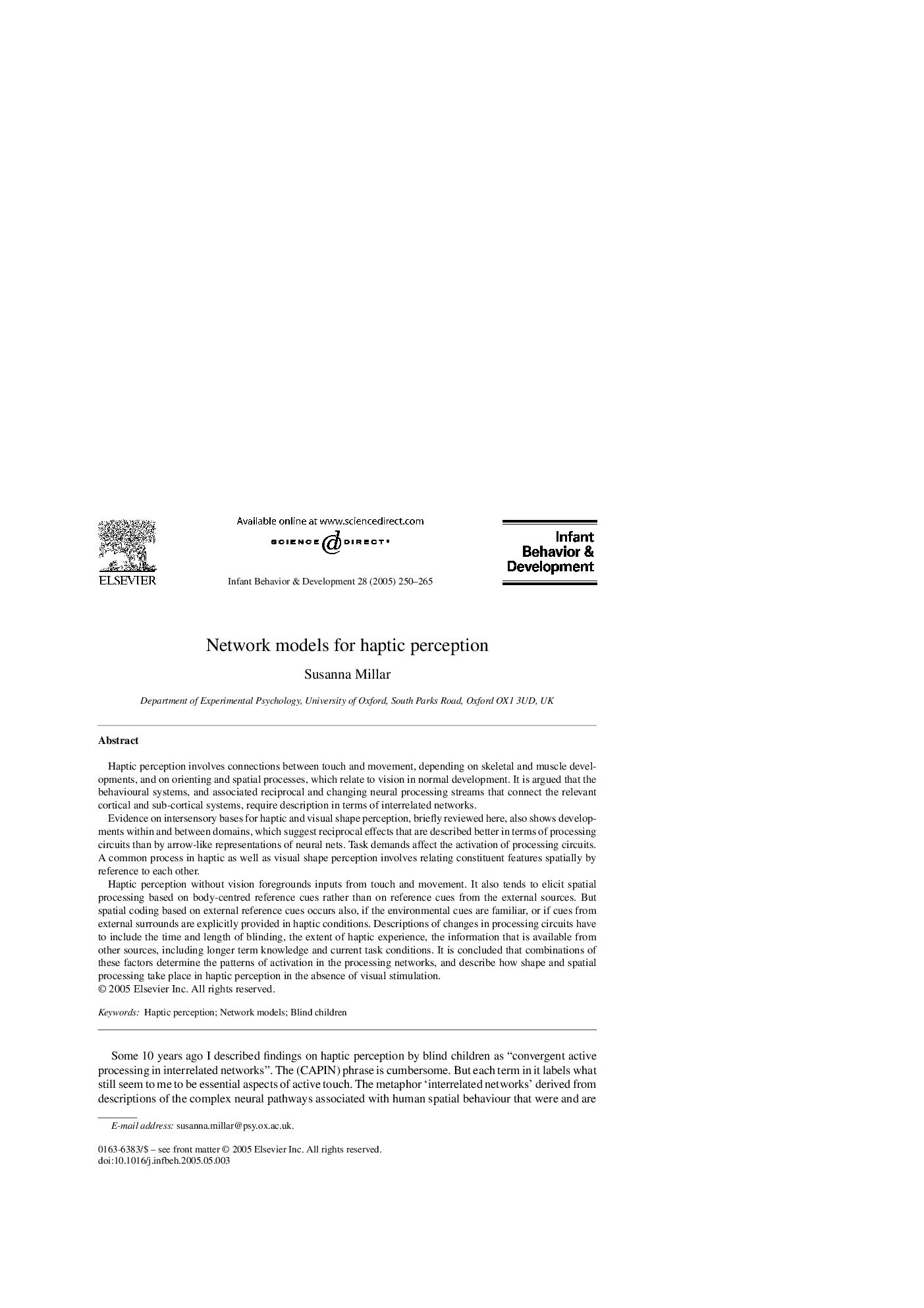| Article ID | Journal | Published Year | Pages | File Type |
|---|---|---|---|---|
| 10452880 | Infant Behavior and Development | 2005 | 16 Pages |
Abstract
Haptic perception without vision foregrounds inputs from touch and movement. It also tends to elicit spatial processing based on body-centred reference cues rather than on reference cues from the external sources. But spatial coding based on external reference cues occurs also, if the environmental cues are familiar, or if cues from external surrounds are explicitly provided in haptic conditions. Descriptions of changes in processing circuits have to include the time and length of blinding, the extent of haptic experience, the information that is available from other sources, including longer term knowledge and current task conditions. It is concluded that combinations of these factors determine the patterns of activation in the processing networks, and describe how shape and spatial processing take place in haptic perception in the absence of visual stimulation.
Keywords
Related Topics
Life Sciences
Neuroscience
Behavioral Neuroscience
Authors
Susanna Millar,
